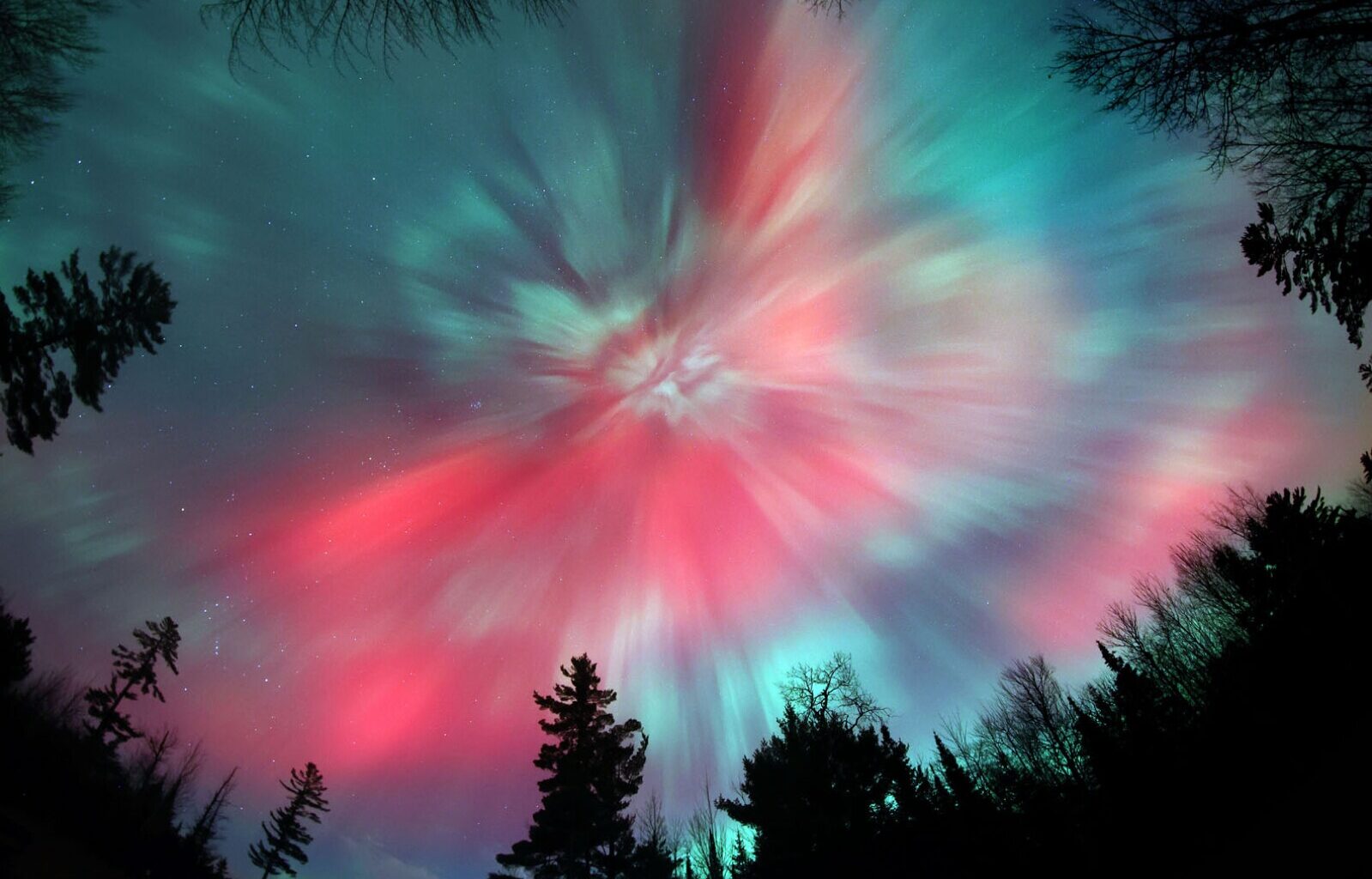Did you venture out past your bedtime to see the northern lights this week?
They were incredible. We had two nights in a row of strong geomagnetic storms powered by multiple, powerful solar flares from a large sunspot group numbered region 4274. Two of those blasts launched back-to-back salvos of billions of tons of charged particles at Earth called coronal mass ejections (CMEs).
Sometimes these solar storms barrel past the planet with little effect. Not this time. Instead, the magnetic clouds coupled with Earth’s magnetic field and loaded it with the materials and energy to power auroras from dusk till dawn.

Before this crimson arc shot with rays took shape, it was a featureless, pale pink band across the southern sky called a stable red arc (SAR). During big geomagnetic storms, electric currents in Earth’s upper atmosphere become energized and heat the upper atmosphere. This excites oxygen atoms to release red light as a SAR. SARs are normally faint, but this one was bright and vividly red with the naked eye. The color reminded me of heating iron until it glows a deep red.
Contributed / Bob King
Word got out and people took notice. Rural roads around Duluth were jammed with traffic. We were all in search of a dark sky and a place to park for the chance to look up and be humbled. Most people, including myself, remarked about how much red they saw in the aurora, a color not commonly seen. Let’s take a minute to find out why.

This whorl of pillars from Nov. 11 looked positively three-dimensional. Since we’re seeing the aurora in profile, it’s easy to see that red aurora is higher than the green.
Contributed / Bob King
Auroras often appear green because our eyes are most sensitive to yellow-green light and much less so to red. That’s why it shows up so well in camera time-exposure. To see it with the eye, red aurora has to be unusually bright. Red aurora occurs high up in the atmosphere at an altitude of around 150-300 miles. Green emission happens at lower altitudes, around 75 miles. Both are produced when incoming charged particles strike and energize oxygen atoms. After the impacts, the atoms release that energy in the form of green and red light when they return to their original relaxed state.
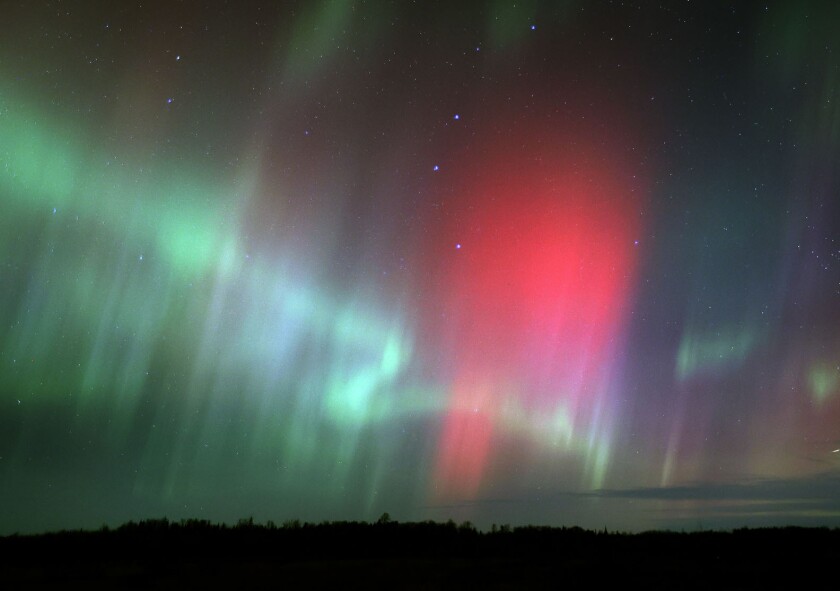
I’ll never forget how intensely red this big blob appeared, accented by that cool green zigzag.
Contributed / Bob King
At high altitude, the number of atoms drops sharply — it’s basically a hard vacuum up there. After it’s struck by a charged particle, an oxygen atom needs almost two minutes to release that energy. If a neighboring atom were to bump into it during the transition, it would short-circuit the process. But because there are so few atoms at that altitude, oxygen has time to release red light before a collision occurs.
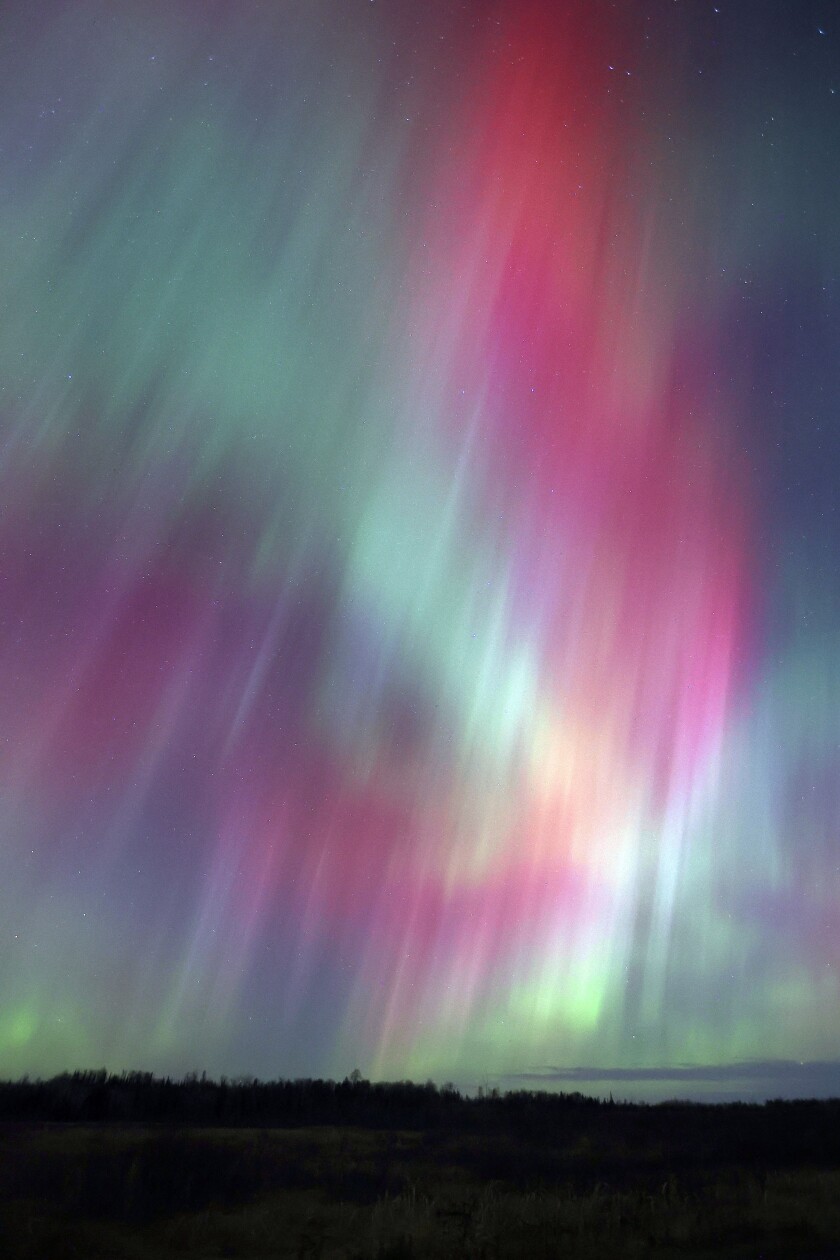
Orange-colored auroras aren’t common. I captured just one small patch (below center) during the Nov. 11 storm. It may have been caused by color mixing in the aurora.
Contributed / Bob King
Farther down, the atmosphere is denser, and atoms get bumped around a lot by other atoms. When a solar particle strikes and excites an oxygen atom, a neighboring atom slams into it almost immediately. Instead of red light, it bleeds the energy away about a second later as green light. Collisions are so frequent at lower altitudes that there’s not enough time for oxygen to emit red light.
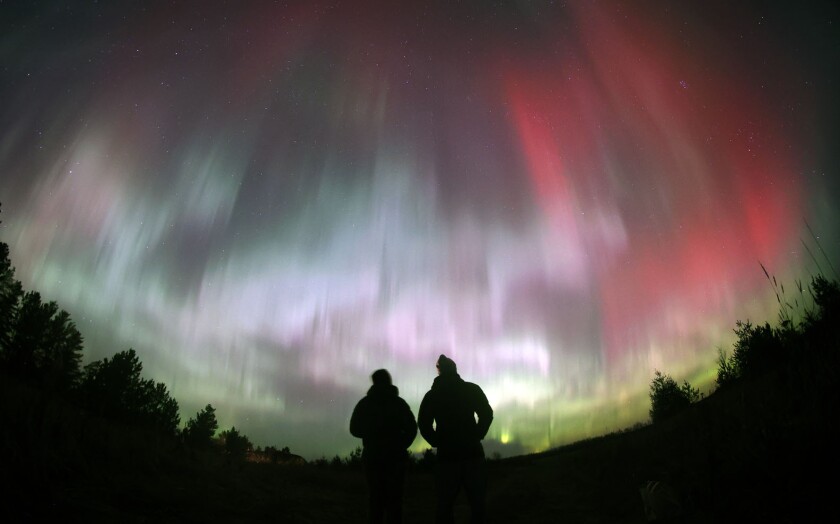
Mandie (left) and Shawn Rooney of Duluth watch the aurora pulse and dance across the sky on Nov. 12 just outside the Duluth city limits.
Contributed / Bob King
There’s so little oxygen to begin with at high altitude, a strong storm is required to crank up enough oxygen atoms to produce the red aurora. Seeing red is a good sign that a significant storm is underway. Overall, the Nov. 11 storm reached the G4 (severe) level, with aurora reported in all 50 states (including Hawaii) and as far south as the tropics. A separate, single CME from the same sunspot group instigated the following night’s show. Although it led to another all-night aurora, that one lacked the intensity of the previous blast. For those who watched from dark skies, the pulsating patches of aurora overhead were a sight to behold. One person described it as resembling a breeze blowing through fluttering campfire flames.
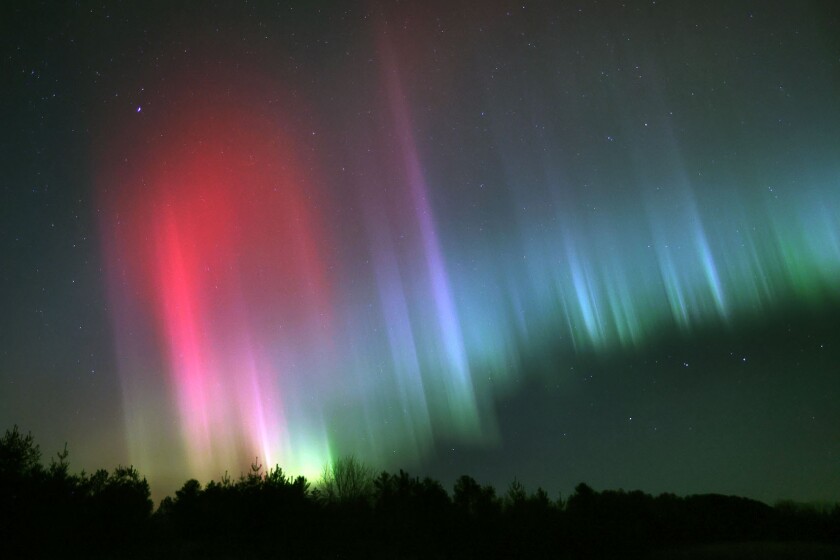
A brilliant, sharp display of colorful rays blew up in the northwestern sky during the Nov. 12 aurora.
Contributed / Bob King

The corona aurora often flashes and pulsates continuously, generating wild angelic and birdlike forms like this “flying gull” on Nov. 11.
Contributed / Bob King
What a treat it was to see so many forms and so much movement. Ample reward for standing out in those chill winds. Besides the traditional arcs and rays (pillars), we were treated to rayed arcs, shimmering curtains, coronas, undulations and stable red arcs (SARs) — faint, diffuse bands of red light across the southern sky. Both nights, the aurora overtopped the zenith and spilled as far south as Orion and Canis Major.
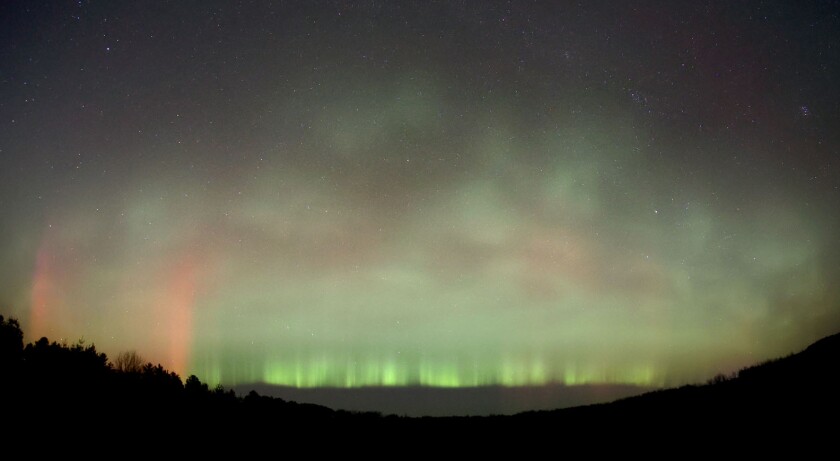
In this full-frame fisheye lens photo from Nov. 12, odd cloud-like puffs of aurora hover over a curtain of closely spaced green rays only a short distance above the northern horizon. Lots of auroral activity often occurs near the horizon, so finding an unobstructed view to the north helps.
Contributed / Bob King
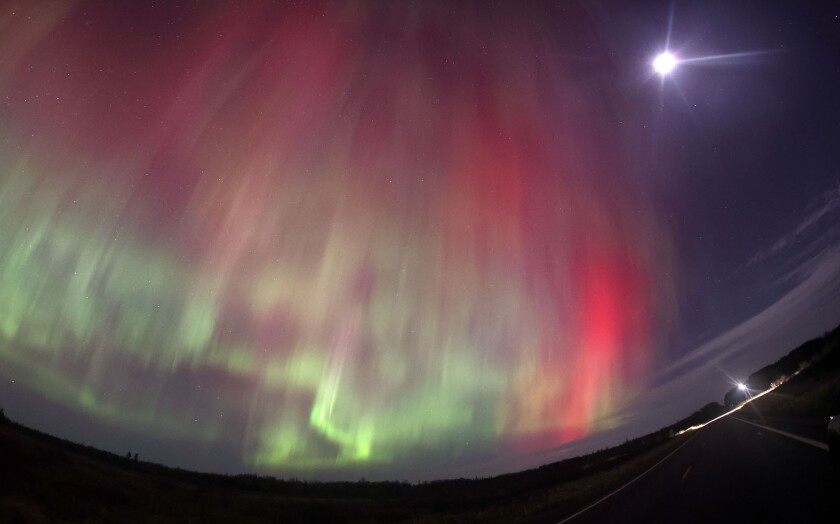
Glare from the half-moon (upper right) hardly affected the strong northern lights display on Nov. 11.
Contributed / Bob King
Mesmerized by the dancing lights, lots of us stayed up past our bedtime. I didn’t call it quits until 5 a.m. And reluctantly at that. I would have gone home earlier, but an aurora-hunter from Michigan joined me at 1:30 a.m. Our mutual enthusiasm kept us going for another two hours as we stood in the wind in the middle of Normanna Road in Normanna Township, wowing away.

Rays of aurora converge into a star-shaped pattern high in the southern sky on Nov. 11 from near Boulder Lake.
Contributed / Bob King
Before it departed from view, sunspot region 4274 blew another “kiss” in the form of a strong solar flare. Some of the blast may have been directed toward the Earth — we’ll know soon. In the meantime, particles en route from a different form of solar activity called a coronal hole should arrive Sunday night, Nov. 16, and possibly ignite a modest aurora in the northern sky between about 9 and midnight CST.
I hope it happens, and I hope you see it. More awe never hurts.

“Astro” Bob King is a freelance writer and retired photographer for the Duluth News Tribune. You can reach him at nightsky55@gmail.com.

